Wandering Albatross Facts
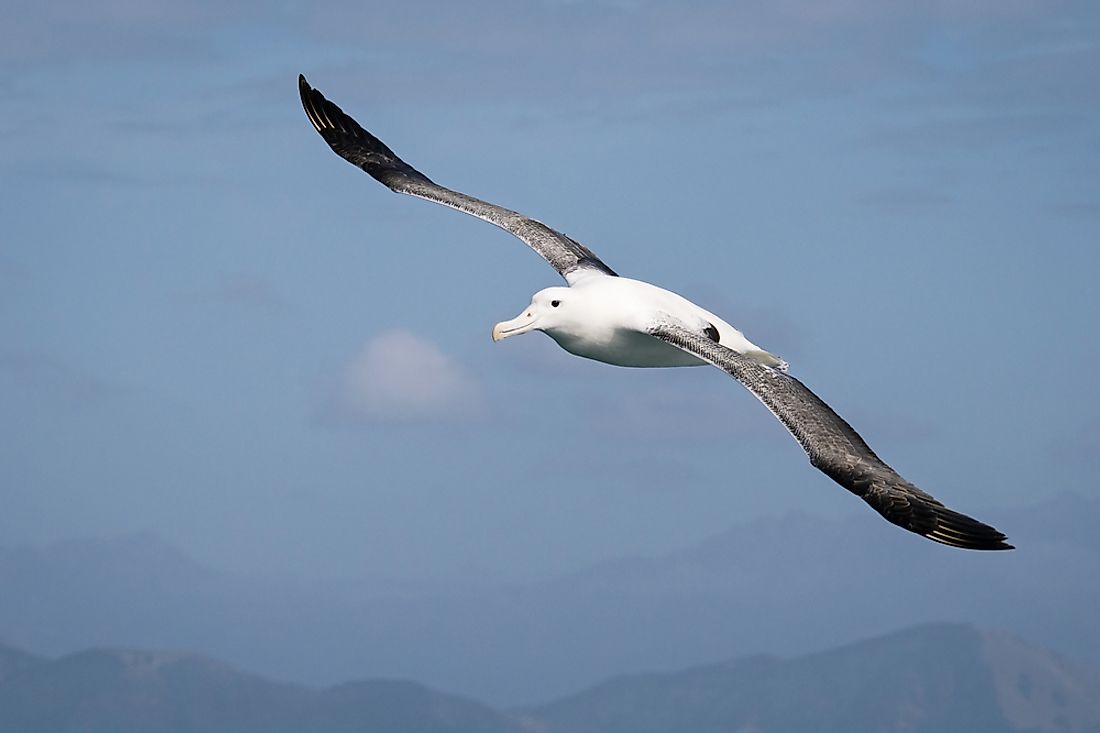
The sight of a flying wandering albatross overhead is spectacular. These large feathered birds have the largest wingspan of any birds - they can reach up to 11 feet! This makes the wandering albatross the largest bird of the albatross species. Their wings are adapted for floating on the sea surface and gliding for several hours without even flapping. They are among the few birds that survive on salty water. This is because they possess a salt gland on the top of the nasal passage that enables them to desalinate and control the salt level in their bodies.
5. Physical Description
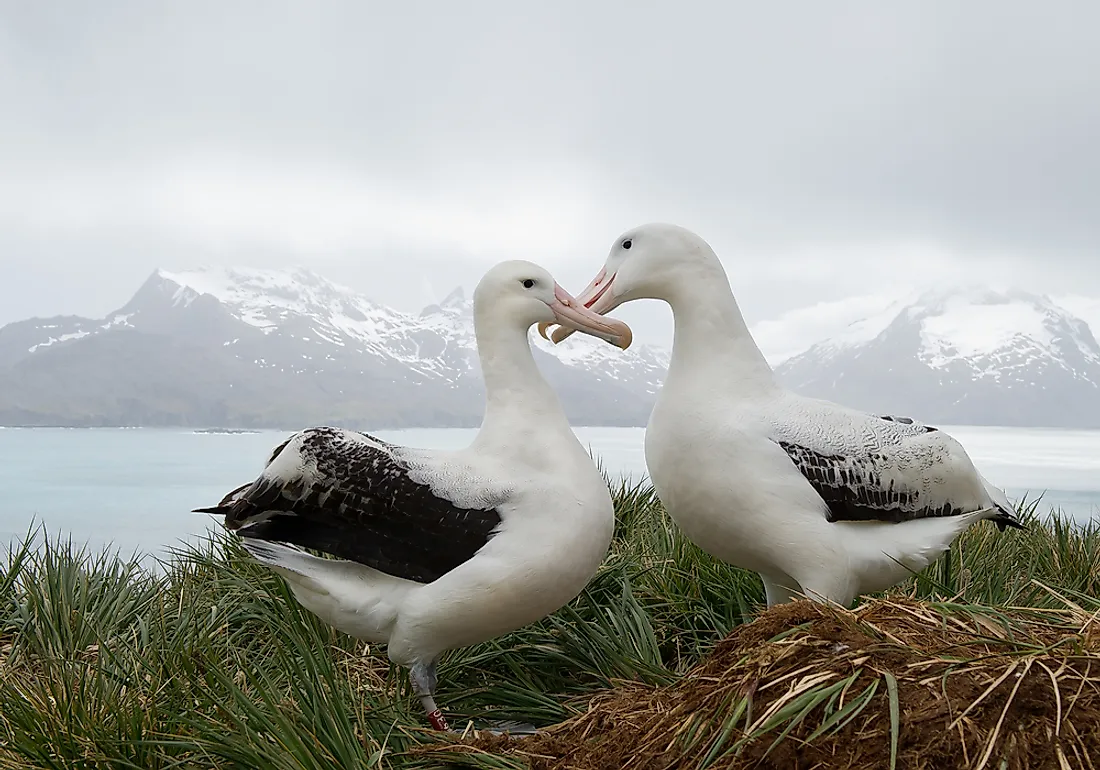
The wandering albatross is a white bird with large wings that can span up to eleven feet. The feathers on their wings are black at the top and white at the bottom. The longest wingspan measured by was 12 feet by 2 inches, although unverified reports claim that a giant wandering albatross was once sported and could have a wingspan of up to 17 ft 5 inches. The long wingspan allows the bird to float in the air without the need to flap its wings for a couple of hours. Its average length is about four feett 5 inches, but the females are known to be slightly larger than their male counterparts. A young albatross is chocolate brown and turns white as it ages, and the features on top of their wings turn black as they approach adulthood. The wings of the male are more white than those of the males and also possess a faint peach spot on both sides of their heads. Their beaks are long, pink and hooked to allow them to pick and hold on to fish.
4. Diet
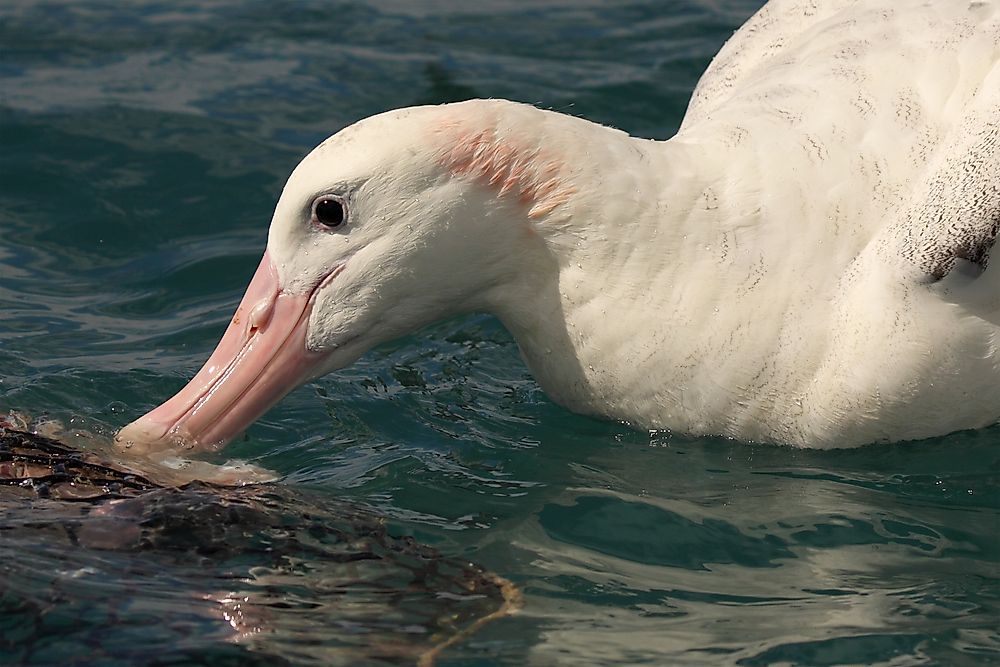
The wandering albatross feeds on small marine animals such as fish, crustaceans, and cephalopods. However, they are known to follow boats and sea cruisers, hoping to feed on leftover handouts. They can spot a school of fish from above the water and make a shallow dive to catch its prey. After eating they are known to use their wings to float helplessly on the water, a situation that makes them prone and vulnerable to attack.
3. Habitat and Range
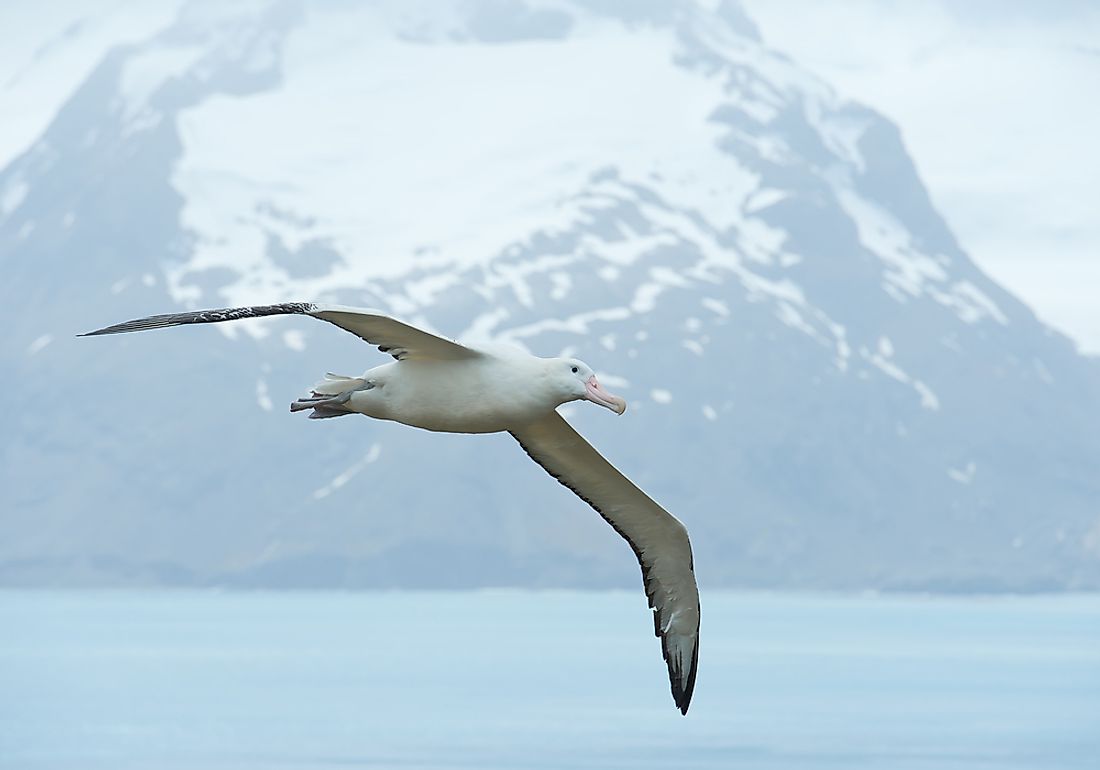
The wandering albatross is known to breeds in several islands north of the Antarctic Circle including the Crozet Islands, Prince Edward Islands, South Georgia Island and Macquarie Island. It feeds off the coast of New Zealand, preferably the Kaikoura Peninsula. They spend their time flying and only land to either feed or breed. They cover long distances across the southern oceans. One banded bird was reported to have traveled about 3,730 miles in just twelve days!
2. Behavior
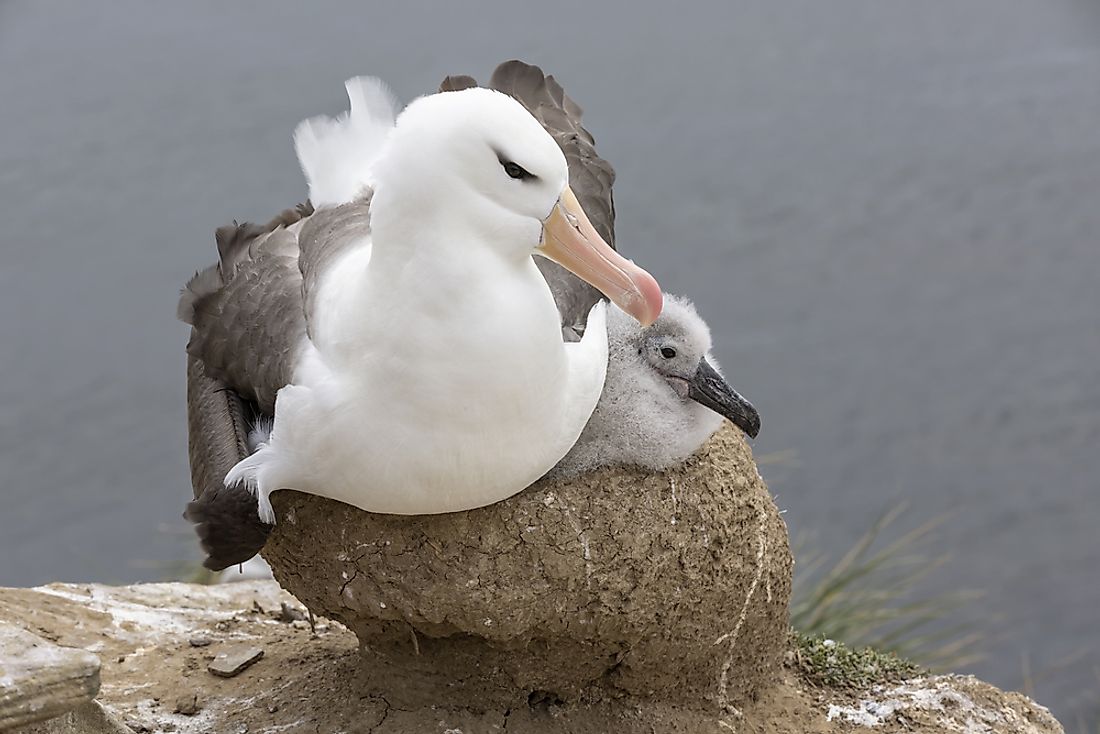
The wandering albatross reaches sexual maturity at the age of 11 years. Wandering albatrosses mate for life. The albatross begins creating nests made of mud and grass in preparation for the mating in early November. The females begin laying 10cm long eggs between 10 December and 5 January. The incubation period is about eleven weeks, and parents take turns to care for the eggs. After hatching, the parents will also take turn switching off between caring for the chicks and hunting. They regurgitate stomach oil for the chicks to feed on. After a couple of weeks, both parents leave to hunt and take longer periods out in the sea before returning to their nests.
1. Other Important Wandering Albatross Facts
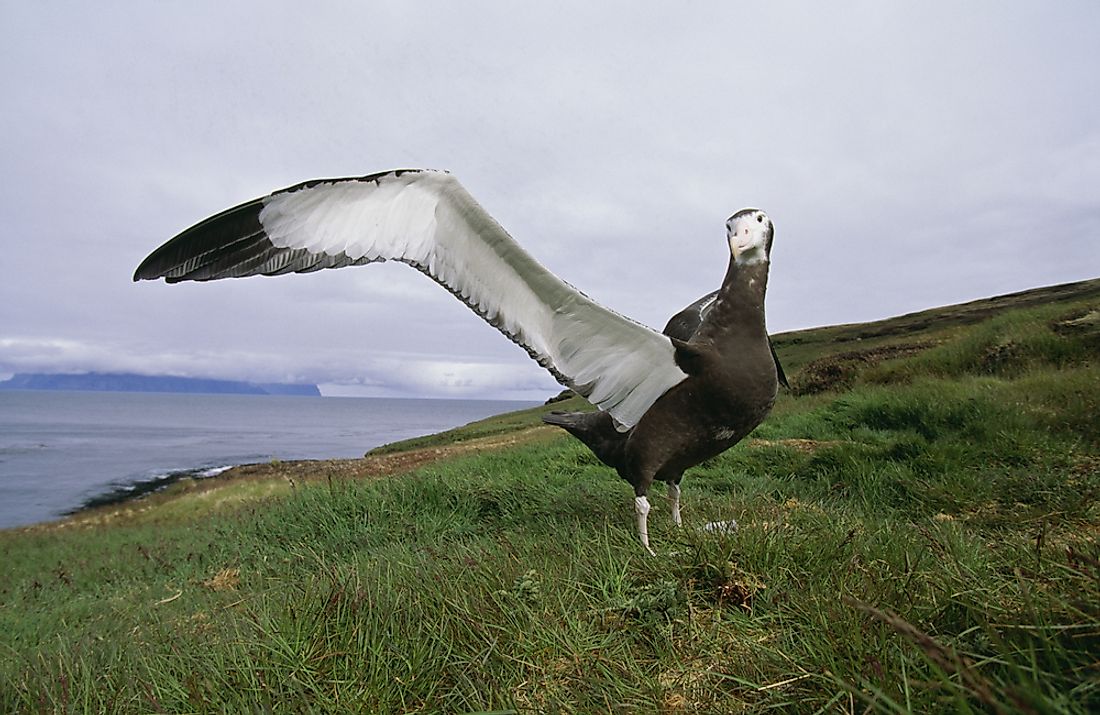
Relationship with Humans
Although their long wings benefit the birds immensely, thier wings historically have also made them target for sailors who captured the birds and used their wing bones to make tobacco pipes. Some early explorers of the southern seas found companionship in the birds during their solitary escapades and believed that whoever shot the bird would have an evil fate on him. The bird would accompany ships and boats for days without landing on either land or water. Tales from sailors narrate that the bird would fly tirelessly in both harsh and moderate weather. The Maori people of New Zealand baited the albatross and used them as a source of food and used their wing to create flutes, needles, and fish hooks.
Threats
The bird is at risk from human activities, particularly longline fishing. Due to their aggression during the hunting of fish, the birds get caught up in fishing lines while targeting baits means for fish. They drown while attempting to free themselves or are made easy prey by predators. The most recent statistics conducted in 2007 revealed that there were about 8,114 pairs of breeding birds compared to 8,500 pairs in 1998. Pollution, climate change, and loss of habitat are also major threats to the birds.
Conservation Efforts
The IUCN considers the wandering albatross to be a vulnerable species. Every year, about 7% of hatched birds die. The Crozet Islands, in the southern Indian Ocean, are home to the largest number of these birds, totaling about 2,000 breeding pairs. The South Georgia Island accounts for 1,553 pairs. Their population on the South Georgia Islands is shrinking at a rate of 1.8% per year although the number of birds at the Crozet Islands is considered to be stable for the most part. The Convention for the Conservation of Antarctic Marine Living Resources (CCAMLR) has initiated measures to reduce accidental trapping of the birds in South Georgia by 99%, a measure that has also been adopted by other fishing organizations. The islands in which the birds occupy are protected reserve - the Macquarie Islands have been designated as a World Heritage site while the Crozet and Kerguelen are nature reserves. Appendix II of the Convention on Migratory Species also protect these birds from loss of habitat through human activities. Mitigation measures and the banning and relocation of fishing operations from the feeding grounds of these birds are some of the measures taken to recover their population.











